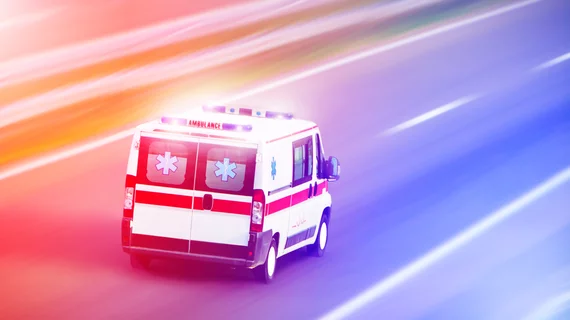Emergency cardiovascular care and COVID-19: What healthcare providers need to know
The American Heart Association (AHA) has shared new recommendations for providing emergency cardiovascular care, including CPR, to patients with known or suspected COVID-19.
The interim guidance, available in full online, is only to be followed when providers are specifically worried about the spread of SARS-CoV-2, the virus that causes COVID-19. In all other instances, the AHA noted, “standard protocols” are to be followed.
“Healthcare providers need to focus on helping people during this challenging time and the American Heart Association is doing everything it can to make it easier,” Comilla Sasson, MD, PhD, a practicing emergency room physician and the American Heart Association’s vice-president for emergency cardiovascular care science and innovation, said in a prepared statement. “The information we are providing is drawn primarily from the U.S. Centers for Disease Control and World Health Organization recommendations. It includes information about caring for patients and guidance for EMS and other first responders.”
As stated in the CDC’s Standard and Transmission-Based Precautions recommendations, aerosol-generating procedures such as CPR should be performed in airborne infection isolation rooms (AIIRS) with respiratory protection being worn at all times. Only essential providers should be present. When patients have known or suspected COVID-19, they are to be treated “in a single-person room with the door closed” and AIIRs “should be reserved for patients undergoing aerosol-generating procedures.”
The guidance also emphasized the importance of proper hand hygiene and detailed how personal protective equipment should be handled during this time of frequent supplies shortages. When available, respirators should be used when treating COVID-19 patients—and gowns should be made a priority for “aerosol-generating procedures, care activities where splashes and sprays are anticipated, and high-contact patient care activities that provide opportunities for transfer of pathogens to the hands and clothing of providers.”
In addition, in cases of acute respiratory failure, providers should “consider proceeding directly to endotracheal intubation.”
The AHA also examined how emergency medical dispatchers and other first responders should proceed in this time. For instance, dispatchers are to question any callers to see if they may be experiencing symptoms associated with COVID-19—but immediate lifesaving interventions are still to be addressed first when applicable.
Patient transport is another key topic addressed in the guidance.
“When COVID-19 is suspected in a patient needing emergency transport, prehospital care providers and healthcare facilities should be notified in advance that they may be caring for, transporting, or receiving a patient who may have COVID-19 infection,” according to the AMA.

